Grout vs caulk in shower
patsfan
14 years ago
Featured Answer
Comments (15)
MongoCT
14 years agopatsfan
14 years agoRelated Professionals
Hammond Kitchen & Bathroom Designers · North Versailles Kitchen & Bathroom Designers · South Farmingdale Kitchen & Bathroom Designers · Boca Raton Kitchen & Bathroom Remodelers · Payson Kitchen & Bathroom Remodelers · Saint Helens Kitchen & Bathroom Remodelers · Tuckahoe Kitchen & Bathroom Remodelers · Fort Myers Glass & Shower Door Dealers · Fort Worth Glass & Shower Door Dealers · Toms River Glass & Shower Door Dealers · Vallejo Glass & Shower Door Dealers · Avocado Heights Cabinets & Cabinetry · Lindenhurst Cabinets & Cabinetry · Mount Prospect Cabinets & Cabinetry · Saint James Cabinets & CabinetryMongoCT
14 years agopatsfan
14 years agobikrchc
14 years agobikrchc
14 years agobill_vincent
14 years agobikrchc
14 years agobikrchc
14 years agobill_vincent
14 years agoTERSO MR®
6 years agoEPHROSS DESIGNS
6 years agolast modified: 6 years agomillworkman
6 years agoMarie B (zone 7A)
last year
Related Stories
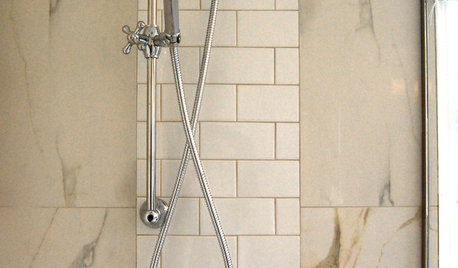
REMODELING GUIDES9 Ways Grout–Yes, Grout–Can Add to Your Design
Choose From a Palette of Grout Colors for a Warm, Unified Look
Full Story
BATHROOM DESIGNConvert Your Tub Space Into a Shower — the Tiling and Grouting Phase
Step 3 in swapping your tub for a sleek new shower: Pick the right tile and test it out, then choose your grout color and type
Full Story
TILEEpoxy vs. Cement Grout — What's the Difference?
Grout is grout, right? Nope. Cement and epoxy versions have different appearances, durability and rules of installation
Full Story
BATHROOM TILEQuick Fix: Repair Cracked Bathroom Grout
Banish an eyesore and safeguard your bathroom from water damage in 30 minutes or less with this DIY repair
Full Story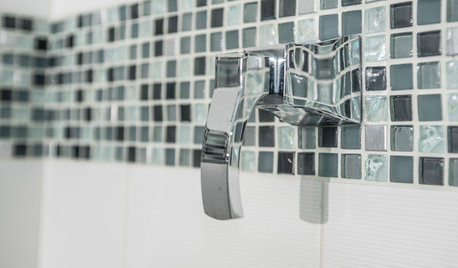
TILE3 Key Steps for Grouting That Looks Its Best
Get your grout right to keep your tile beautiful and for an installation that will last
Full Story
HOUSEKEEPINGHow to Clean Grout — Stains and All
If your grout is grossing you out, this deep-cleaning method will help it look new again
Full Story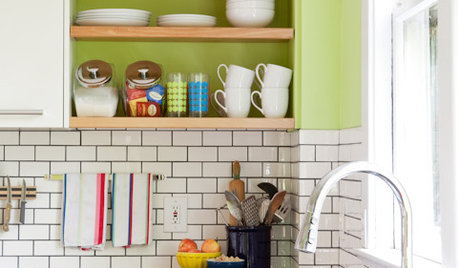
KITCHEN DESIGNSubway Tile Picks Up Gray Grout
Heading into darker territory, subway tile offers a graphic new look for kitchens, bathrooms and more
Full Story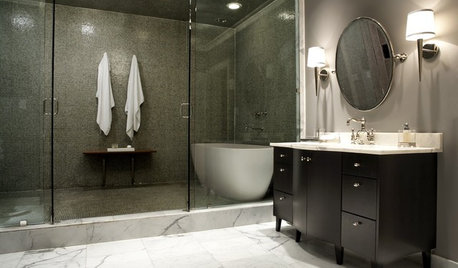
BATHROOM DESIGNHow to Choose Tile for a Steam Shower
In steamy quarters, tile needs to stand up to all that water and vapor in style. Here's how to get it right the first time
Full Story
BATHROOM DESIGNHow to Choose the Best Drain for Your Shower
Don't settle for a cheap fix when you can pick a shower drain that suits your style preferences and renovation codes alike
Full Story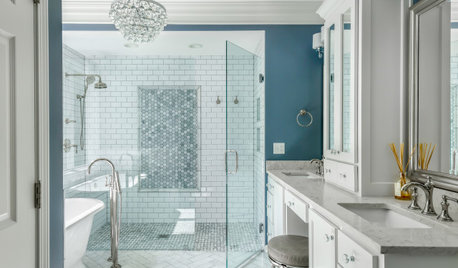
HOUSEKEEPINGHow to Clean a Glass Shower Door
See which tools and methods will keep those glass shower walls and doors sparkling clean
Full StoryMore Discussions








EPHROSS DESIGNS